GENEVA, Switzerland (AFP) — Two years in, as the now Omicron-fueled COVID crisis rages, there is still hope the pandemic could begin fading in 2022 — though experts say gaping vaccine inequalities must be addressed.
It may seem like a far-off reality, as countries impose fresh restrictions to address the fast-spreading new variant and surging cases and a depressing feeling of deja vu sets in.
“We’re facing another very hard winter,” World Health Organization chief Tedros Adhanom Ghebreyesus said last week.
But health experts say we are far better equipped now than a year ago to tame the pandemic, with ballooning stocks of safe and largely effective vaccines and new treatments available.
“We have the tools that can bring [the pandemic] to its knees,” Maria Van Kerkhove, the top WHO expert on the Covid crisis, told reporters this month.
“We have the power to end it in 2022,” she insisted.
But, she added, those tools must be used correctly.
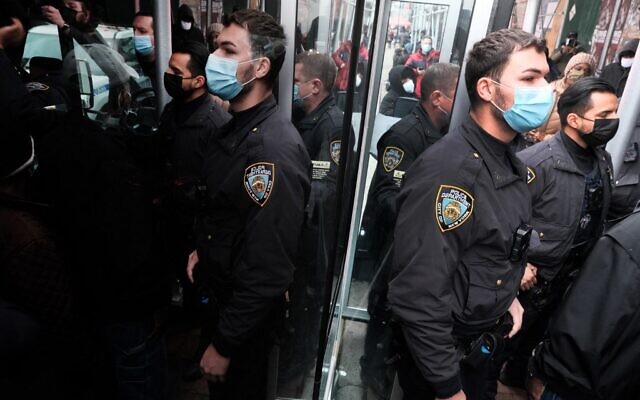
Police assist as a large crowd attempts to receive COVID-19 testing kits from city workers distributing the kits along Flatbush Avenue on December 24, 2021 in the Brooklyn borough of New York City (SPENCER PLATT / Getty Images via AFP)
Glaring inequity
A year after the first vaccines came to market, around 8.5 billion doses have been administered globally.
And the world is on track to produce around 24 billion doses by June — more than enough for everyone on the planet.
But glaringly unequal vaccine access has meant that as many wealthy nations roll out additional doses to the already vaccinated, vulnerable people and health workers in many poorer nations are still waiting for a first shot.
About 67 percent of people in high-income countries have had at least one vaccine dose, but not even 10% in low-income countries have, UN numbers show.
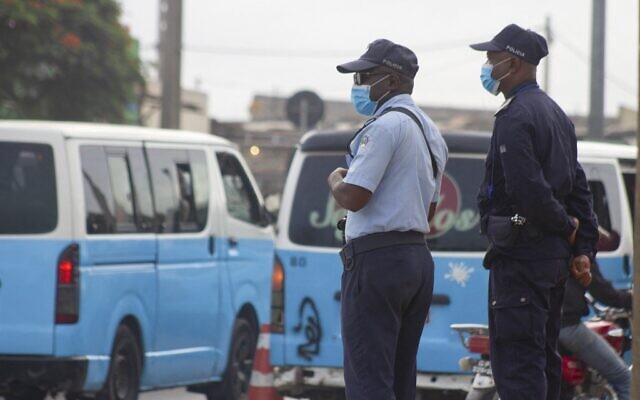
Police officers monitor the flow of passengers in Luanda, Angola on December 26, 2021 (Osvaldo Silva / AFP)
That imbalance, which the WHO has branded a moral outrage, risks deepening further as many countries rush to roll out additional doses to respond to Omicron.
Early data indicates that the heavily-mutated variant, which has made a lightning dash around the globe since it was first detected in southern Africa last month, is more resistant to vaccines than previous strains.
While boosters do seem to push protection levels back up, the WHO insists to end the pandemic, the priority must remain getting first doses to vulnerable people everywhere.
‘Myopic’
Allowing COVID to spread unabated in some places dramatically increases the chance of new, more dangerous variants emerging, experts warn. So even as wealthy countries roll out third shots, the world is not safe until everyone has some degree of immunity.
“No country can boost its way out of the pandemic,” Tedros said last week. “Blanket booster programs are likely to prolong the pandemic, rather than ending it.”
The emergence of Omicron is evidence of that, WHO emergencies chief Michael Ryan told AFP. “The virus has taken the opportunity to evolve.”
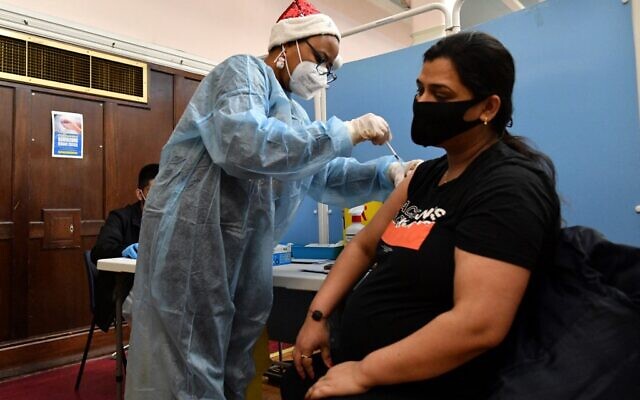
A health worker administers a dose of the COVID-19 vaccine to a pregnant woman at a pop-up coronavirus vaccination center at the Redbridge Town Hall, east London on December 25, 2021 (JUSTIN TALLIS / AFP)
Gautam Menon, a physics and biology professor at Ashoka University in India, agreed it was in wealthy countries’ best interest to ensure poorer nations also get jabs.
“It would be myopic to assume that just by vaccinating themselves they have gotten rid of the problem.”
‘Part of the furniture’
Ryan suggested increased vaccination should get us to a point where COVID “settles into a pattern that is less disruptive.”
But he warns that if the world fails to address the imbalance in vaccine access, the worst could still lie ahead.
One nightmare scenario envisions the COVID pandemic left to rage out of control amid a steady barrage of new variants, even as a separate strain sparks a parallel pandemic.
Confusion and disinformation would shrink trust in authorities and science, as health systems collapse and political turmoil ensues.
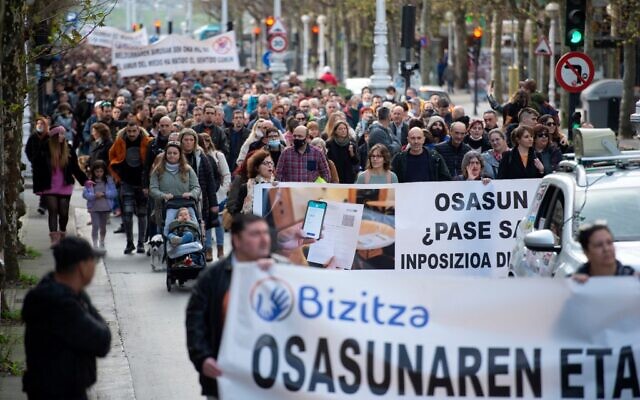
Demonstrators take part in a demonstration called by “Bizitza” (Life) association, to protest against the health pass and COVID-19 vaccines for children, in the Spanish Basque city of San Sebastian, on December 26, 2021 (ANDER GILLENEA / AFP)
This is one of several “plausible” scenarios, according to Ryan. “The double-pandemic one is of particular concern, because we have one virus causing a pandemic now, and many others lined up.”
But better global vaccine coverage could mean that COVID — though not likely to fully disappear — will become a largely controlled endemic disease, with milder seasonal outbreaks that we will learn to live with, like the flu, experts say.
It will basically “become part of the furniture,” Andrew Noymer, an epidemiologist at the University of California in Irvine, told AFP.
Overwhelmed hospitals
But we’re not yet there.
Experts caution against too much optimism around early indications that Omicron causes less severe disease than previous strains, pointing out that it is spreading so fast it could still overwhelm health systems.
“When you have so many, many infections, even if it is less severe… [hospitals] are going to be very stressed,” top US infectious disease expert Anthony Fauci told NBC News last week.
That is a depressing prospect two years after the virus first surfaced in China.
The scenes of intubated patients in overcrowded hospitals and long lines of people scrambling to find oxygen for loved ones have never ceased. Images of improvised funeral pyres burning across a Delta-hit India have epitomized the human cost of the pandemic.
Officially, nearly 5.5 million people have died worldwide, although the actual toll is likely several times higher.
Vaccine hesitancy could increase that toll.
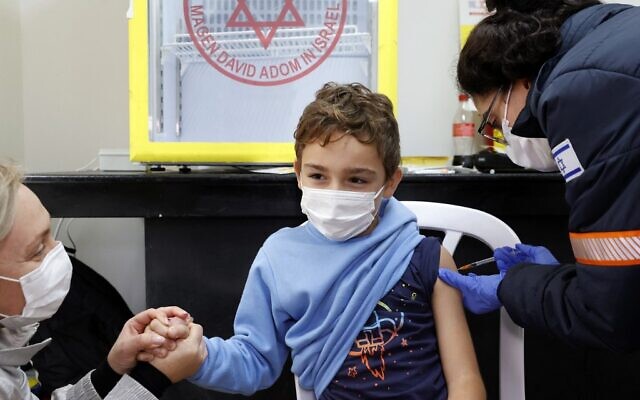
An Israeli Magen David Adom medic administers a dose of the Pfizer-BioNtech vaccine against the coronavirus for children to a young boy, in the Israeli town of Ramat Gan near Tel Aviv, on December 23, 2021 (JACK GUEZ / AFP)
In the United States, which remains the worst-affected country with over 800,000 deaths, the constant flow of short obituaries on the FacesOfCovid Twitter account includes many who did not have the shot.
“Amanda, a 36-year-old math teacher in Kentucky. Chris, a 34-year-old high school football coach in Kansas. Cherie, a 40-year-old 7th-grade reading teacher in Illinois. All had an impact in their communities,” read a recent post.
“All deeply loved. All unvaccinated.”